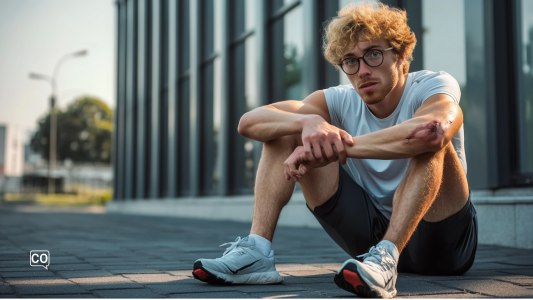Spaans B1.29.1 Pas op voor valpartijen! Delen Gekopieerd!
Eenvoudige dialoog over verwondingen en pijn.
Diálogo: ¡Cuidado con las caídas!
Diálogo sencillo sobre lesiones y dolores.

B1 Spaans
Niveau: B1
Module 4: Estilo de vida saludable (Gezonde levensstijl)
Les 29: Lesiones y dolores (Blessures en pijn)
Richtlijnen tijdens het lesgeven +/- 15 minuten
Audio en video
Gesprek
| 1. | Pedro: | ¡Ana ayúdame! Tengo una herida en la rodilla y no entiendo la instrucción de esta crema con la letra tan pequeña. | ( tags has to included in the translation, and the tags should be included in the translation in the equivalent position. Use the vocabulary as used in The Netherlands">Vertaling laden...) |
| 2. | Ana: | A ver... "Lávate la piel antes de aplicar la crema". ¡Hazlo ahora! | ( tags has to included in the translation, and the tags should be included in the translation in the equivalent position. Use the vocabulary as used in The Netherlands">Vertaling laden...) |
| 3. | Pedro: | ¡Me duele la rodilla desde que me caí ayer! ¿Crees que sirve para eso? | ( tags has to included in the translation, and the tags should be included in the translation in the equivalent position. Use the vocabulary as used in The Netherlands">Vertaling laden...) |
| 4. | Ana: | Sí aquí dice: "Úsala en heridas, cortes y quemaduras pero no la pongas en el hueso expuesto". | ( tags has to included in the translation, and the tags should be included in the translation in the equivalent position. Use the vocabulary as used in The Netherlands">Vertaling laden...) |
| 5. | Pedro: | Al menos mi hueso está bien. Solo me duele la rodilla y el tobillo. | ( tags has to included in the translation, and the tags should be included in the translation in the equivalent position. Use the vocabulary as used in The Netherlands">Vertaling laden...) |
| 6. | Ana: | Pues ponte la crema en la rodilla pero no te toques el codo con la mano sucia. | ( tags has to included in the translation, and the tags should be included in the translation in the equivalent position. Use the vocabulary as used in The Netherlands">Vertaling laden...) |
| 7. | Pedro: | ¡Ya está! Ahora me duele la muñeca por abrir la crema. ¡Qué día! | ( tags has to included in the translation, and the tags should be included in the translation in the equivalent position. Use the vocabulary as used in The Netherlands">Vertaling laden...) |
| 8. | Ana: | ¡No te quejes tanto! Si te duele ponte una venda y descansa. | ( tags has to included in the translation, and the tags should be included in the translation in the equivalent position. Use the vocabulary as used in The Netherlands">Vertaling laden...) |
| 9. | Pedro: | Tienes razón. Pero ¿qué hago con el tobillo? Me duele desde que salté ayer. | ( tags has to included in the translation, and the tags should be included in the translation in the equivalent position. Use the vocabulary as used in The Netherlands">Vertaling laden...) |
| 10. | Ana: | No lo fuerces. ¡Dale un masaje y no te rompas otro músculo por favor! | ( tags has to included in the translation, and the tags should be included in the translation in the equivalent position. Use the vocabulary as used in The Netherlands">Vertaling laden...) |
